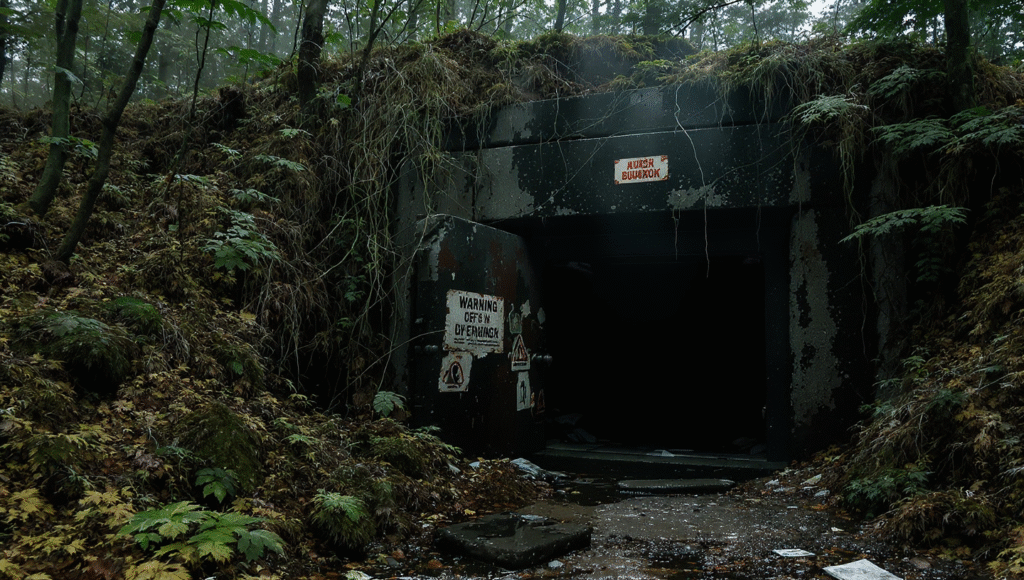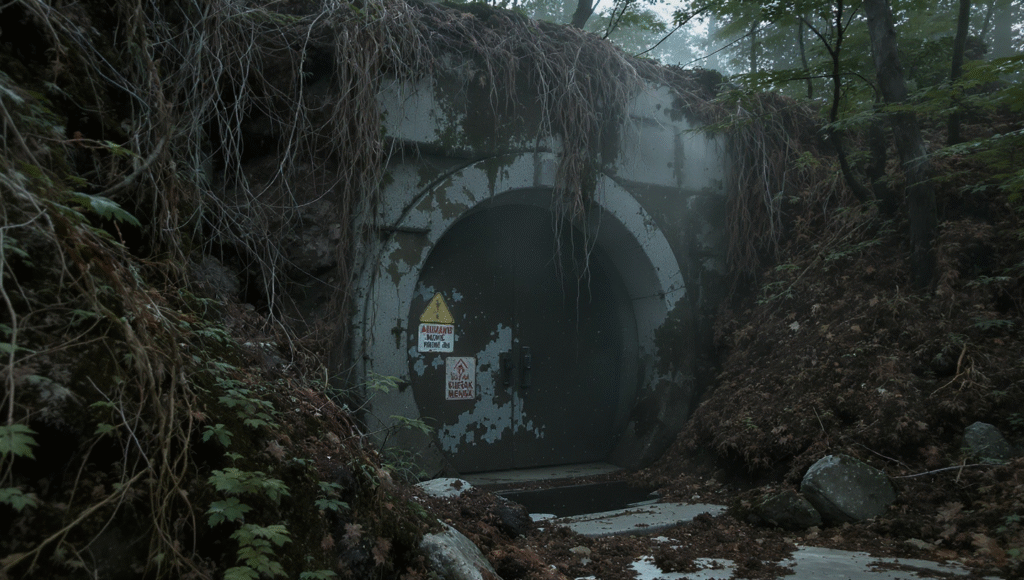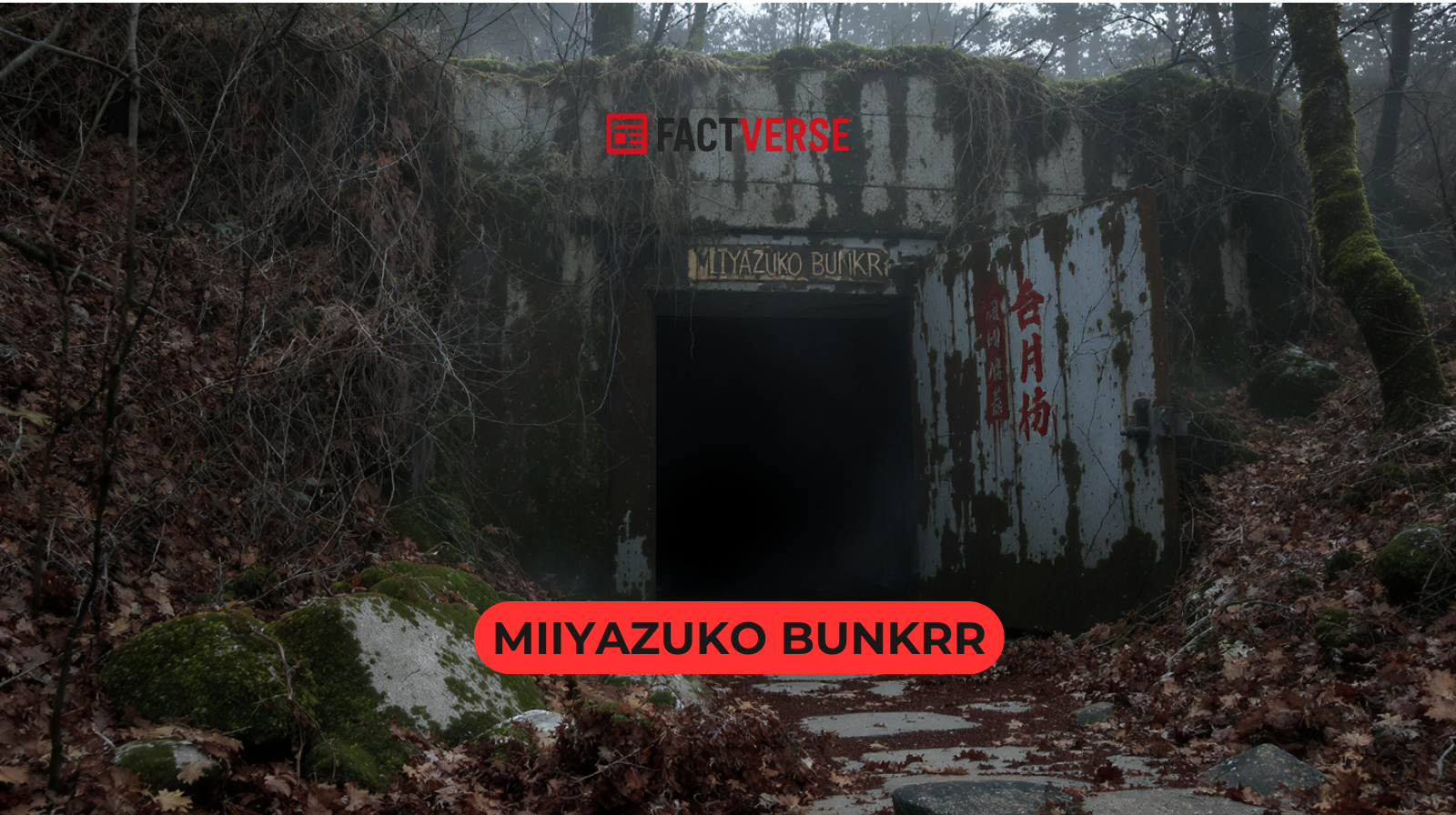Ever heard of a place so secret that even locals barely know it exists? That’s Miiyazuko Bunkrr for you. Tucked away in the rugged mountains of central Japan, this underground fortress tells a story that most history books conveniently skip. It’s not your typical tourist trap, and honestly, that’s what makes it fascinating.
The Miiyazuko Bunkrr wasn’t just some random hole in the ground. This was serious military infrastructure built during World War II when Japan needed every strategic advantage they could get. Think reinforced concrete walls thick enough to survive bombings, hidden entrances that’d make a spy movie jealous, and tunnels that go deeper than you’d probably want to venture.
But here’s the thing. Most people searching for historical sites end up at the usual spots—Hiroshima, Nagasaki, maybe some castle ruins. They miss out on gems like this completely.
What Exactly Is Miiyazuko Bunkrr?
Let me paint you a picture. Imagine standing at the entrance of an underground complex that once housed military commanders, communication equipment, and supplies meant to last through extended sieges. That’s what we’re dealing with here. The bunker served dual purposes—command center and safe haven all rolled into one heavily fortified package.
Construction started during the height of tensions in East Asia. Engineers worked around the clock to create something that could withstand earthquakes (because Japan), aerial bombardments, and ground assaults. The level of planning that went into Miiyazuko Bunkrr is honestly mind-blowing when you consider the era’s technology.
The walls? Reinforced concrete designed specifically to handle extreme pressure. The ventilation system? Advanced enough to keep people breathing underground for weeks. These weren’t amateurs throwing together a quick shelter—this was calculated, precise military engineering.
The Secret Location Nobody Talks About
Here’s where things get interesting. The exact coordinates remain undisclosed. Yeah, you read that right. Even in 2025, authorities keep the precise location under wraps for preservation reasons. Some say it’s in the mountainous regions of central Japan, but good luck getting more specific than that.
Access is heavily restricted too. You can’t just show up with a backpack and expect a tour. Most people who get inside are historians, researchers, or those connected with local historical societies and universities. There’s a whole application process involved.
Why all the secrecy? Partly preservation, partly respect for the site’s historical significance. Miiyazuko Bunkrr isn’t a theme park—it’s a genuine piece of wartime history that deserves protection from vandalism and over-tourism.
The Engineering Marvel Behind The Fortress
The construction itself deserves its own documentary. We’re talking about a time when modern construction equipment was limited, yet engineers managed to create an underground labyrinth that’s still standing strong decades later. The structural integrity was meticulously calculated to endure multiple types of threats simultaneously.
They dug deep. Really deep. Multiple levels connected by narrow passageways and staircases carved into rock. Each section had designated purposes—sleeping quarters, command rooms, storage areas, and communication hubs. The layout wasn’t random; every tunnel served strategic importance.
Water supply? Sorted. Food storage? Covered. Emergency exits? Multiple routes planned. The military minds behind Miiyazuko Bunkrr thought of everything. They even installed systems to deal with waste management and air filtration that were ahead of their time.
Lighting came from generators that could run independently for extended periods. Communication wires ran through protected conduits. This wasn’t just about surviving—it was about maintaining operational capability while under siege.
Historical Context That Matters

To really appreciate Miiyazuko Bunkrr, you need to understand the climate of fear and preparation that gripped Japan during WWII’s final years. The Pacific War wasn’t going well. Allied forces were advancing, and Japanese military leadership knew mainland defense might become necessary.
Underground fortresses like this represented a last-ditch strategy. If conventional warfare failed, these bunkers would serve as strongholds for continued resistance. Key personnel could coordinate operations, protect valuable intelligence, and potentially negotiate from a position that wasn’t complete vulnerability.
The psychological aspect mattered too. Knowing such facilities existed boosted morale among military ranks. It signaled commitment and preparedness, even if the reality was that these bunkers might’ve only delayed the inevitable.
Fortunately, Miiyazuko Bunkrr never saw the full-scale combat it was designed for. Japan surrendered before these underground fortresses were truly tested. But their existence tells us plenty about the mindset and desperation of that era.
Why It Remains Relevant Today
Fast forward to modern times, and places like Miiyazuko Bunkrr serve entirely different purposes. They’re educational resources, architectural studies, and sobering reminders of where nationalism and militarism can lead societies.
Students of military history find these sites invaluable. You can read about fortification strategies in textbooks, but walking through actual underground command centers hits different. The scale, the atmosphere, the claustrophobic reality of what life underground would’ve been like—books can’t capture that fully.
Architecture and engineering students also benefit. The construction techniques, material choices, and structural solutions implemented in Miiyazuko Bunkrr offer case studies in problem-solving under extreme constraints. How do you build something earthquake-resistant underground? How do you ensure air quality for dozens of people in sealed spaces? These aren’t theoretical questions when you’re standing inside the answers.
Cultural Preservation Efforts
Japan takes its historical preservation seriously, even for uncomfortable reminders of its wartime past. Miiyazuko Bunkrr benefits from this commitment. Local historical societies work to maintain the site’s structural integrity while documenting its history for future generations.
There’s a delicate balance involved. Preserve too much, and you risk turning tragedy into spectacle. Preserve too little, and valuable lessons disappear. Current efforts focus on scholarly access rather than mass tourism, which seems like the right call.
Documentation projects have recorded detailed measurements, photographs, and oral histories from people connected to the bunker’s construction and operation. This archival work ensures that even if physical access remains limited, the knowledge doesn’t vanish.
The Visitor Experience (If You’re Lucky Enough)
For the rare individuals who gain access to Miiyazuko Bunkrr, the experience is reportedly unforgettable. The descent into the main complex immediately transports you back decades. Temperature drops. Natural light disappears. The weight of earth above becomes almost palpable.
Guides (when permitted) explain the function of different sections. This room stored ammunition. That corridor led to officer quarters. Over there was the communication hub with now-obsolete equipment still mounted on walls. It’s like stepping into a time capsule that nobody bothered to polish up for visitors.
The silence strikes most people. Underground, cut off from surface sounds, you get a sense of the isolation these spaces represented. Imagining spending weeks down here during actual wartime conditions isn’t pleasant, and that discomfort is probably the most valuable educational aspect.
Some areas show deterioration—rust, water damage, structural cracks that preservation teams monitor closely. Other sections remain surprisingly intact, testament to the original construction quality.
Comparing To Other Historical Military Sites
Japan has numerous WWII-era sites, but Miiyazuko Bunkrr occupies a unique position. Unlike Hiroshima’s Peace Memorial or Okinawa’s battlefields, this location didn’t witness catastrophic violence. It’s more about potential violence, about preparation that thankfully went unused.
This makes it somewhat less emotionally overwhelming than sites associated with actual combat or atomic bombings. Yet that doesn’t diminish its significance. If anything, it offers a different perspective—the planning, the resource investment, the sheer effort that went into preparing for worst-case scenarios.
Other countries have similar underground complexes from the same era. Germany’s bunker systems, Britain’s war rooms, America’s cold war shelters—they all share common themes of paranoia, preparation, and massive resource allocation toward survival infrastructure.
Lessons From The Depths
What can modern society learn from places like Miiyazuko Bunkrr? Plenty, actually. There’s obvious stuff about the futility of war and the costs of militarism. But there’s also interesting lessons about human ingenuity under pressure.
Engineers solved complex problems with limited technology. Planners created sustainable underground environments before modern HVAC systems existed. Logisticians calculated supply needs for scenarios they hoped would never occur. That kind of problem-solving capability translates across contexts.
There’s also something to be said about facing uncomfortable history directly. Japan’s relationship with its WWII past remains complex and sometimes controversial. Preserving sites like this, even with limited access, shows a willingness to acknowledge that era without glorifying it.
The Future Of Historical Preservation

As original WWII veterans and witnesses continue to pass away, physical sites like Miiyazuko Bunkrr become increasingly important. They’re tangible connections to a past that’s rapidly moving beyond living memory into pure history.
Preservation technology continues improving. 3D scanning could create virtual replicas accessible to researchers worldwide without physical visits. Augmented reality might eventually let people experience these spaces without risking damage to the actual structures.
But there’s something irreplaceable about physical presence in historical spaces. The smell of damp concrete, the echo of footsteps in empty corridors, the slight claustrophobia of enclosed spaces—these sensory experiences contribute to understanding in ways virtual tours struggle to match.
Why You Should Care
Look, most people aren’t hardcore history buffs. I get it. But Miiyazuko Bunkrr represents more than just a cool abandoned military base. It’s a reminder of how quickly ordinary circumstances can escalate into extraordinary preparations for violence.
In our current era of global tensions and uncertainty, there’s value in remembering that the desperate measures of the past weren’t taken lightly. Entire nations devoted massive resources to survival infrastructure because they genuinely feared annihilation. That fear shaped decisions, wasted resources, and left behind monuments to paranoia like this bunker.
Understanding this context makes us better equipped to evaluate modern security theater, military spending justifications, and fear-based policy proposals. History doesn’t repeat, but it definitely rhymes—and places like Miiyazuko Bunkrr are part of that pattern recognition.
Frequently Asked Questions
Can regular tourists visit Miiyazuko Bunkrr?
No, not typically. Access is heavily restricted and usually limited to researchers, historians, and those with specific academic or preservation-related purposes. You’d need to go through local historical societies or universities to even attempt gaining entry.
Where exactly is Miiyazuko Bunkrr located?
The precise location remains undisclosed for preservation and security reasons. It’s believed to be somewhere in the mountainous regions of central Japan, but exact coordinates aren’t publicly available.
Was Miiyazuko Bunkrr ever used in actual combat?
No. The bunker was constructed as a defensive preparation during WWII, but Japan’s surrender came before it saw actual military action. It remains largely as it was built, unused for its intended wartime purpose.
How big is the bunker complex?
Specific dimensions aren’t widely published, but accounts suggest it’s a multi-level underground facility with numerous rooms, corridors, and specialized areas for different military functions. It was designed to house personnel, equipment, and supplies for extended periods.
Are there similar bunkers elsewhere in Japan?
Yes, Japan constructed numerous underground military facilities during WWII, though many remain unknown or undocumented. Miiyazuko Bunkrr is notable for its preservation state and the limited information available about it, which has contributed to its mystique among history enthusiasts.
Final Thoughts
Miiyazuko Bunkrr isn’t your typical historical destination, and maybe that’s exactly why it matters. In a world where history often gets sanitized, commercialized, and turned into entertainment, having spaces that remain raw, restricted, and relatively untouched provides valuable perspective.
Will you ever visit? Probably not, unless you’ve got serious academic credentials or surprising connections. But knowing it exists, understanding what it represents, and considering the context of its creation—that’s accessible to anyone willing to dig a bit deeper than surface-level history.
The bunker stands as silent testimony to a time when nations prepared for worst-case scenarios that thankfully never fully materialized. Let’s hope we’re wise enough to learn from that era without needing to repeat its mistakes. Because building more Miiyazuko Bunkrr equivalents would mean we’ve failed to learn history’s most important lesson—that preventing war is infinitely better than preparing for it.
Read Also: The Hidden World of Miiyazuko Sant.2: A Fascinating Journey





